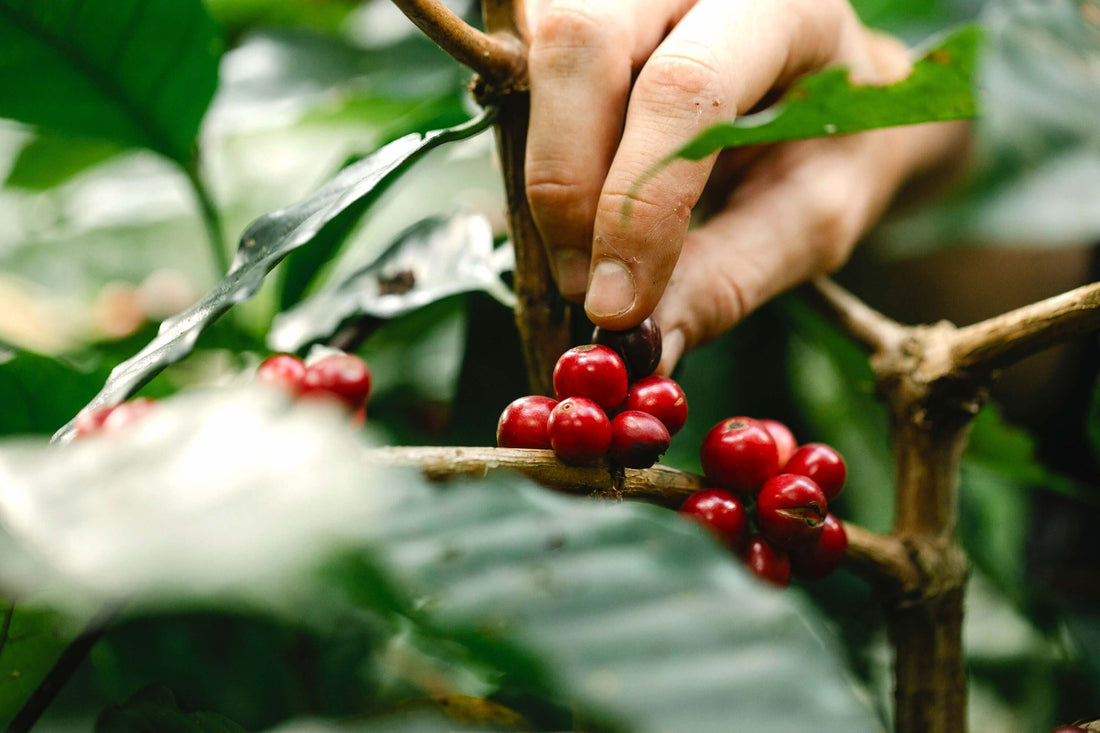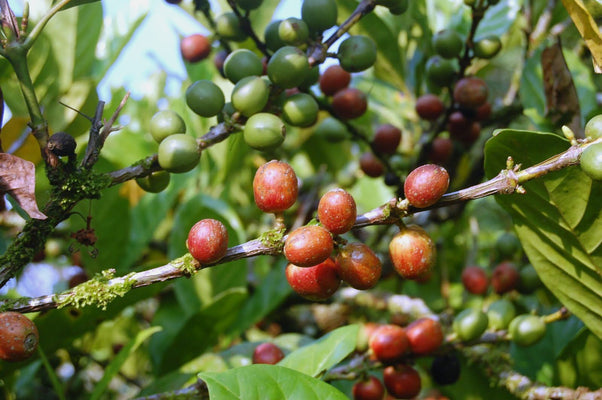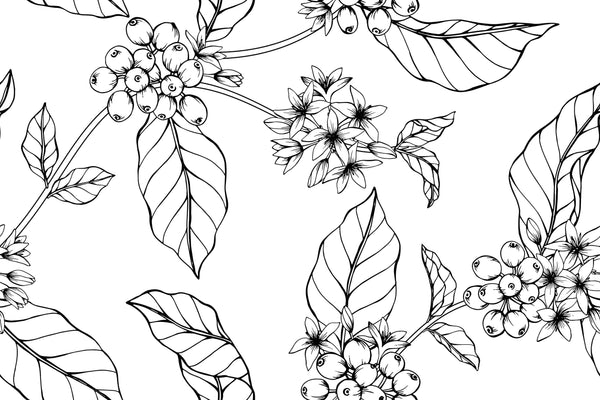
Arabica and Robusta
tai attitude5 min read
Origin
Coffea is a flowering shrub or small tree (abbreviated as coffee plant) that originated on the African and Asian continents. Coffea produces edible fruit. Each fruit contains two green seeds, which turn brown after roasting and are known as coffee beans.
 Coffee fruit, when pulped open, reveals two green seeds.
Coffee fruit, when pulped open, reveals two green seeds.
Coffea was first discovered as early as the 15th century in Africa, though the exact history of its genesis and domestication is unknown. At the end of the 15th century, coffea was taken across Africa and Arabia for widespread cultivation, thus beginning the spread of coffee consumption culture for mankind.
As coffee consumption increased, coffea proliferated, reaching Southeast Asia and the Latin Americas in the 17th century.
With mankind naturalising coffea rapidly across different continents over the centuries, by the 20th century, coffee production could be found in Africa, Latin America, and Asia.
Arabica and Robusta
Coffea arabica and Coffea canephora (Robusta) are the two most widely grown coffea species in the world, with both species combined accounting for 99.0–99.9% of total world coffee production and consumption.
Coffea arabica originated in the eastern area of Africa, as it was wildly discovered in Ethiopia and South Sudan.
Coffea canephora (Robusta) grows indigenously in central and western Africa, stretching from Angola to Liberia to Guinea. It also claimed to have been first discovered in the DR Congo and South Sudan.
 Coffea arabica was first discovered in eastern Africa, while Coffea canephora was discovered in central and western Africa.
Coffea arabica was first discovered in eastern Africa, while Coffea canephora was discovered in central and western Africa.
Coffea arabica, often simply known as Arabica, accounts for 60–80% of world coffee production.
Arabica is known for its pronounced aromatic and sweeter taste. It is considered a mild yet smoother coffee.
The arabica plant requires a cool subtropical climate as it must grow at higher elevations of 1000–2,000 metres and has fairly specific shade requirements. Arabica has a lower crop yield. Moreover, it is susceptible to pests and rust diseases. Overall, it is more expensive to produce.
Latin America, East Africa, Arabia, and Asia are the leading producers of Arabica coffee today, with the country that produces the most arabica being Brazil.
Arabica is mostly sold in specialty coffee shops and higher-end commercial coffee chains for its quality, which usually comes at a higher price. Depending on the grade of the arabica, the price could vary greatly. Arabica may be offered as a standalone coffee (single-origin) or as a blend.
Coffea canephora goes by the nickname Robusta. It has a market share of 20–40%.
Typically considered the stronger coffee, robusta is more bitter, has a thicker mouthfeel, and is much lower in aromatic qualities.
Robusta plants grow at lower elevations, from sea level to 700 metres, which means more landmass is available for them. Its plants reproduce very easily even in harsh temperatures and environments; hence, the nickname “Robusta” is derived from the Italian meaning of robust.
Robusta is hardy because it is rust-resistant, and it has twice the caffeine content, making it more resistant to pests. Robusta has a higher crop yield. Overall, it is cheaper to produce.
Central and Western Africa, Southeast Asia, and Brazil are major producers of Robusta coffee. The country that produces the most robusta is Vietnam.
Robusta is sold as instant coffee or in lower-end commercial coffee chains or shops. Due to its higher caffeine content and strong taste, robusta is rarely offered as single-origin coffee, but is more often used in blends along with arabica.
Due to climate requirements, coffea grows only between the tropic of Cancer in the north and the tropic of Capricorn in the south. The coffee belt particularly highlights which countries produce Arabica, Robusta, or both.
Both Arabica and Robusta have their own unique terroir requirements to grow. One of the easier facts to tell their difference is that arabica does require being grown on hills, while robusta can be grown at sea level.
Appearance-wise, the arabica bean is slightly larger, oval-shaped, and has a wavier central split. On the other hand, robusta bean is slightly smaller, rounder, and it has a straight central split. For many people, it can be challenging to distinguish just by appearance alone.
However, once brewed, the aroma and taste of the two are very apparent.
Arabica is aromatic, and even for non-coffee drinkers, its aroma is pleasant to smell. It tastes milder and smoother.
Meanwhile, robusta's aroma likely will not make such a good first impression, paired with a harsher mouthfeel and a pronounced bitter aftertaste.
 Physical difference between Arabica and Robusta beans
Physical difference between Arabica and Robusta beans
 Detail comparison between Arabica and Robusta. Data source: researchgate.net
Detail comparison between Arabica and Robusta. Data source: researchgate.net
Extra information
Coffee consumption is worldwide, especially in industrialised economies. World coffee production/exports, however, are over 90% from developing countries. This translates to 25 million small producers/families, with over 100 million people relying on coffee for a living.
In between the two main coffee that we consume, arabica is the overall dominant species in terms of cup quality and market share. The world generally prefers arabica, consequently the world is leaning towards producing more arabica to meet the continuously rising demand. In this day and age, arabica is considered the mainstream coffee, with major coffee giants offering exclusively arabica and instant coffee companies transitioning from offering robusta to arabica if not already.
Despite this, robusta still has its place in the market, as it is just as profitable for the coffee sector. Robusta can be sold at a lower price, which can be offset by the volume sold due to its higher crop yield. Because robusta is much more affordable, many get to enjoy coffee that they otherwise could not. Furthermore, robusta's twice-higher caffeine content and uniquely stronger taste profile are preferences for some.





